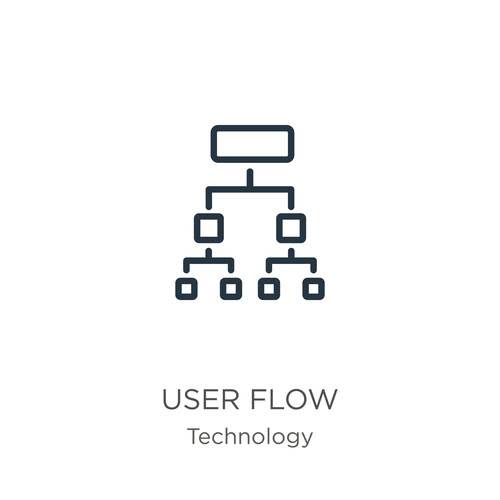Artificial intelligence and machine learning are two popular and often hyped terms these days. And people often use them interchangeably to describe an intelligent software or system. It lets the machines learn independently by ingesting vast amounts of data and detecting patterns. Many ML algorithms use statistics formulas and big data to function. It is arguable that our advancements in big data and the vast data we have collected enabled machine learning in the first place. Machine learning is a powerful tool that increasingly is incorporated into more computer applications.
This step must be adapted, tested and refined over several iterations for optimal results. The major difference between deep learning vs machine learning is the way data is presented to the machine. Machine learning algorithms usually require structured data, whereas deep learning networks work on multiple layers of artificial neural networks.
Is Deep Learning Superior to Machine Learning?
There are various ways in which Artificial Intelligence can emulate human intelligence. One of the ways to do this is through Machine Learning, but it is not the only alternative. More important than the problems they solve is how they solve them; this is where Machine Learning’s ability to learn stands as a major differentiator. Although there are many similarities between Machine Learning and Artificial Intelligence, they are not the same. Cybersecurity – Machine learning is now part and parcel of network monitoring, threat detection and cybersecurity remediation technology.

The information extracted through data science applications is used to guide business processes and reach organizational goals. Another algorithmic approach from the early machine-learning crowd, artificial neural networks, came and mostly went over the decades. Neural networks are inspired by our understanding of the biology of our brains – all those interconnections between the neurons. To sum things up, AI solves tasks that require human intelligence while ML is a subset of artificial intelligence that solves specific tasks by learning from data and making predictions. The machine learning algorithm would then perform a classification of the image. That is, in machine learning, a programmer must intervene directly in the classification process.
Find our Post Graduate Program in AI and Machine Learning Online Bootcamp in top cities:
It was in 1959 when Arthur Samuel had a revolutionary notion that computers could be taught how to learn, instead of just teaching them everything there is to know for them to perform tasks successfully. So even if generative AI and machine learning don’t usher in a new era of creativity, they are destined to bring fundamental change across a great many AI vs machine learning industries. That said, neither generative AI nor machine learning will ever completely replace humans. Just think about all the bad product recommendations you get on websites or streaming services, or all the dumb answers and robotic responses you receive from chatbots. Still, the data only means anything if transformed into actionable insight.

While AI looks to create an intelligent system to accomplish more than one result, ML models can only attain a predefined outcome. For a formal definition of Machine Learning, AI and computer gaming pioneer Arthur Samuel’s 1959 would suffice. To paraphrase, he viewed ML as a field of study to enable computers to learn continuously without being explicitly programmed to do so. These are virtual advisors, AI personal assistants, or intelligent virtual agents that can communicate with businesses and brands through messaging apps. These conversational bots have proven successful in brand engagement, product management and assistance, product marketing, sales, and support.
Generative AI is an emerging technology that uses artificial intelligence, algorithms and large language models to generate content. Machine learning makes uses of deep learning and neural network techniques to generate content that is based on the patterns it observes in a wide array of other content. Artificial intelligence usually relies on some machine learning algorithms like deep learning neural networks and reinforcement learning algorithms. Deep learning’s feature extraction-classification integration is standard where artificial neural networks are involved, regardless of the task. Your job is to provide the raw data to the neural network; the model will handle the rest. Machine learning can be thought of as the process of converting data and experience into new knowledge, usually in the form of a mathematical model.
- Deep learning models use large neural networks — networks that function like a human brain to logically analyze data — to learn complex patterns and make predictions independent of human input.
- Also, this capability implements functionalities like visual search.
- Learn from industry experts through online mentorship sessions and dedicated career support.
- First, you show to the system each of the objects and tell what is what.
- General AI machines have remained in the movies and science fiction novels for good reason; we can’t pull it off, at least not yet.
- Additionally, they may modify existing applications and carry out testing duties.
Simply put, artificial intelligence aims at enabling machines to execute reasoning by replicating human intelligence. Since the main objective of AI processes is to teach machines from experience, feeding the correct information and self-correction is crucial. AI experts rely on deep learning and natural language processing to help machines identify patterns and inferences. On the other hand, Machine Learning (ML) is a subfield of AI that involves teaching machines to learn from data without being explicitly programmed.
Even this example is getting ahead of itself, because until recently neural networks were all but shunned by the AI research community. You might, for example, take an image, chop it up into a bunch of tiles that are inputted into the first layer of the neural network. In the first layer individual neurons, then passes the data to a second layer. The second layer of neurons does its task, and so on, until the final layer and the final output is produced. Machine learning came directly from minds of the early AI crowd, and the algorithmic approaches over the years included decision tree learning, inductive logic programming.
Machine learning accesses vast amounts of data (both structured and unstructured) and learns from it to predict the future. It learns from the data by using multiple algorithms and techniques. Now that we have gone over the basics of artificial intelligence, let’s move on to machine learning and see how it works. “Artificial Intelligence, deep learning, machine learning — whatever you’re doing if you don’t understand it — learn it.